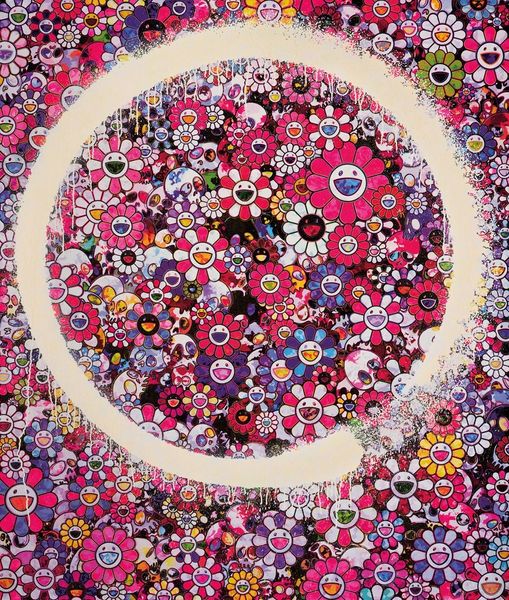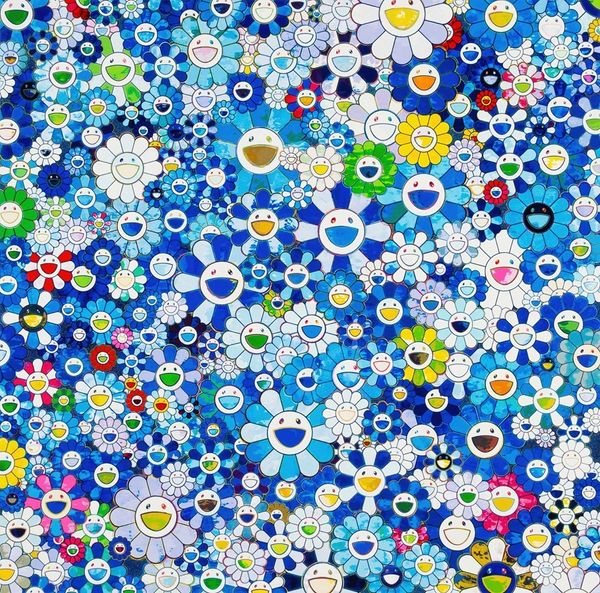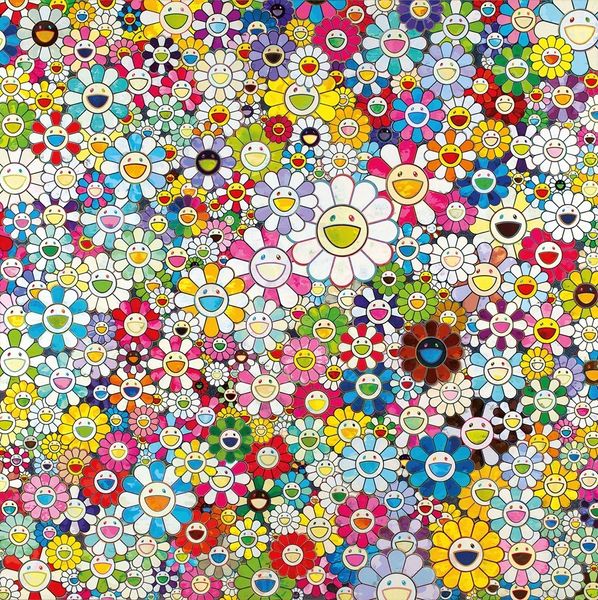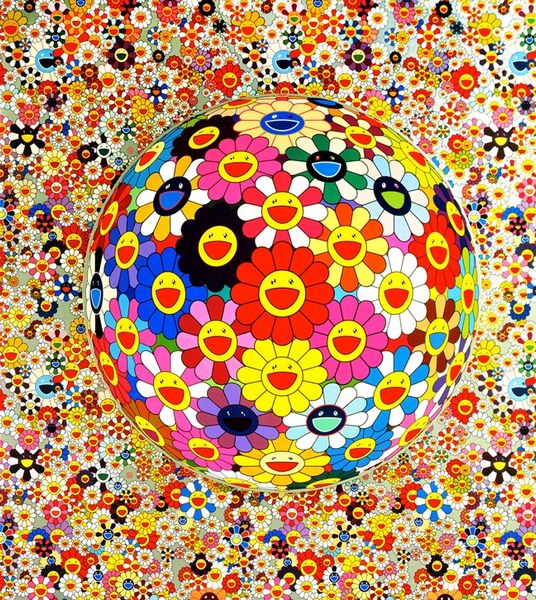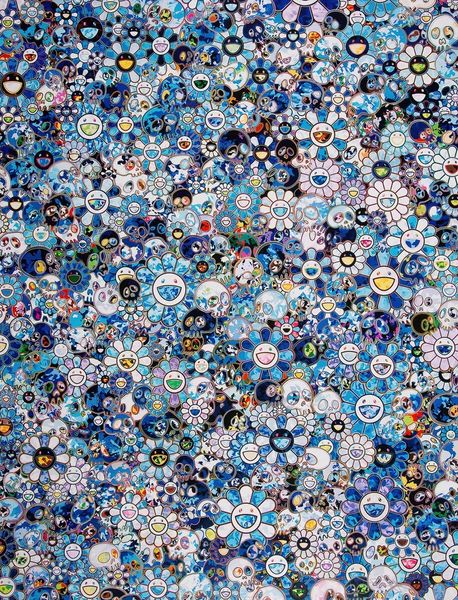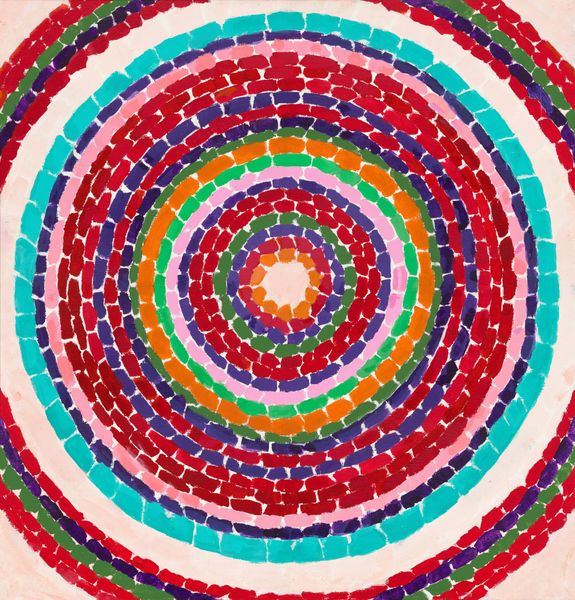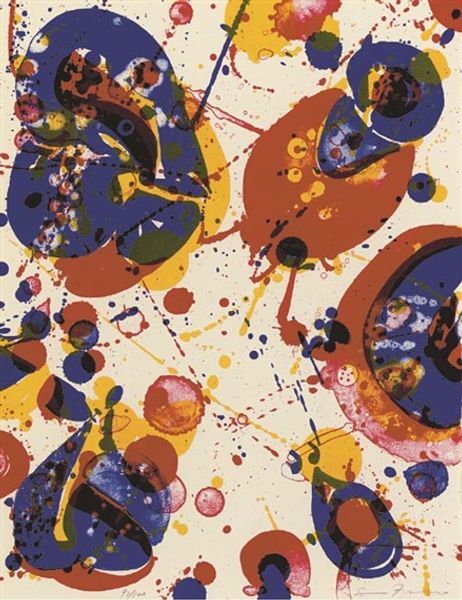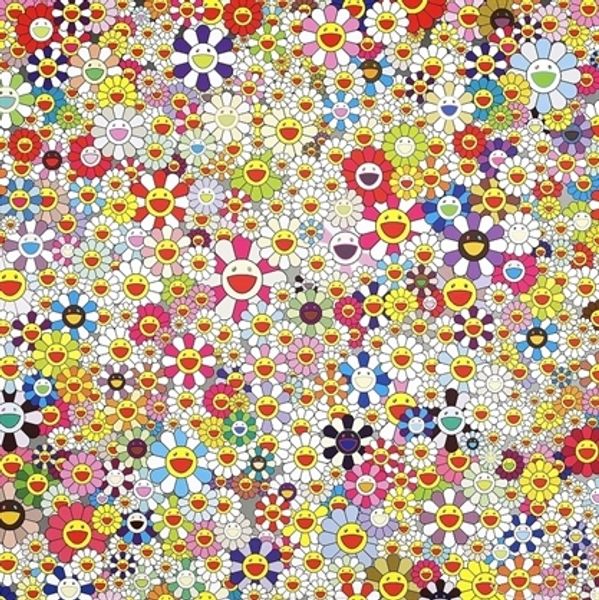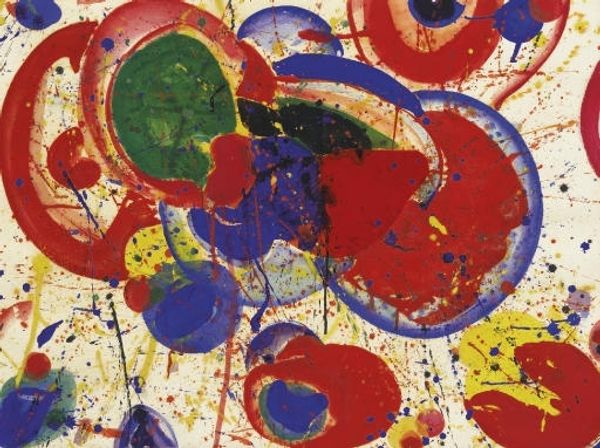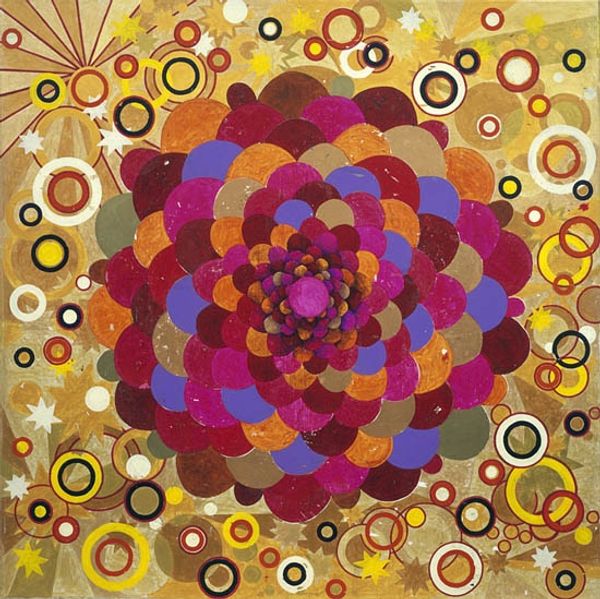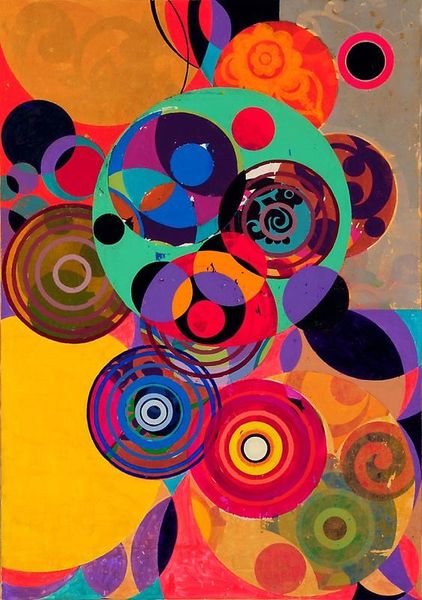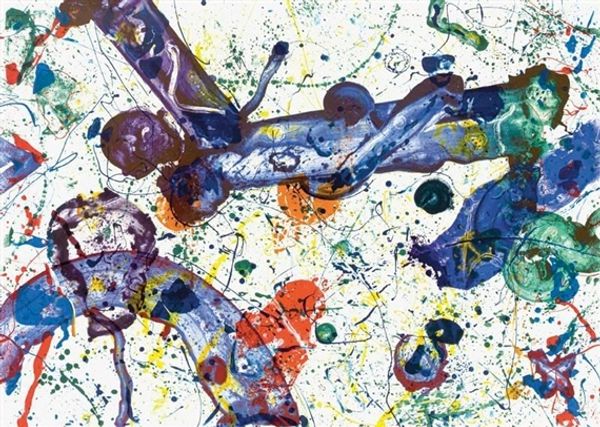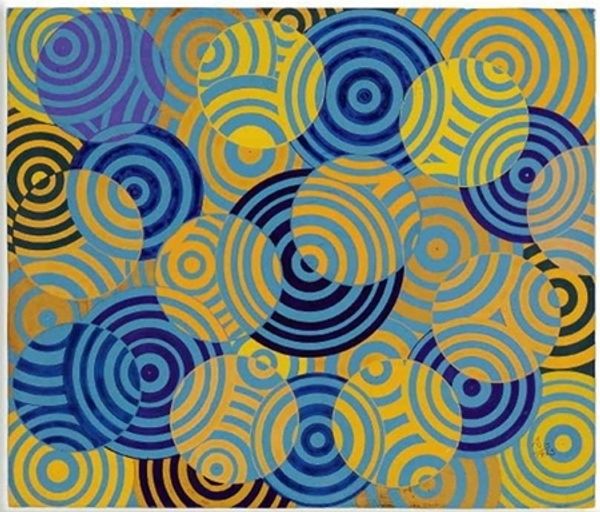
#
neo-pop
Copyright: Modern Artists: Artvee
Curator: Looking at this piece, I'm immediately struck by the simultaneous sense of whimsy and melancholy. It's a visual paradox. Editor: That tension is definitely there. We are standing before Takashi Murakami’s "Enso Blue," created in 2016 using acrylic paint. Murakami masterfully blends pop aesthetics with darker undercurrents, and situates this work amidst contemporary debates about globalization and consumer culture. Curator: The circular Enso itself, traditionally a Zen Buddhist symbol, is quite powerful. The very drippy execution feels very human and fragile but the gesture of making it evokes themes like enlightenment and the void. Do you feel that the image has resonance with ancient forms and themes, while simultaneously critiquing commercialization and manufactured experiences? Editor: Absolutely. The superflat aesthetic flattens historical context and depth, commenting on our contemporary moment, but then the incorporation of icons reinserts historical ideas. Those cute, cartoonish flowers, a signature of Murakami, almost feel weaponized amidst these scattered skulls. Curator: Indeed. There's an emotional layering happening with these seemingly innocent images. As if cultural innocence itself is an illusion of childhood fantasy. Editor: These smiling flowers are, of course, deeply ironic when combined with death and decay, critiquing society’s obsession with surface appearances, with these two sets of images layered in equal value throughout. It challenges the viewer to confront uncomfortable truths behind this "cuteness." Curator: Perhaps what the Enso suggests is not enlightenment, but rather that the human desire for a simple answer or aesthetic is impossible because death and joy cannot be parsed or avoided in modern existence. The bright color palette does provide a sense of levity, even if undercut. It serves to reinforce these binaries. Editor: "Enso Blue" encourages critical thought on these matters, about art's relationship to consumerism and our collective identity, making us consider where do we locate ourselves amidst all of it? Curator: It is an impactful artwork, especially, I think, for what it suggests about artifice and innocence lost in this present age. Editor: I'm left considering what illusions we collectively participate in. What's revealed by those choices.
Comments
No comments
Be the first to comment and join the conversation on the ultimate creative platform.
